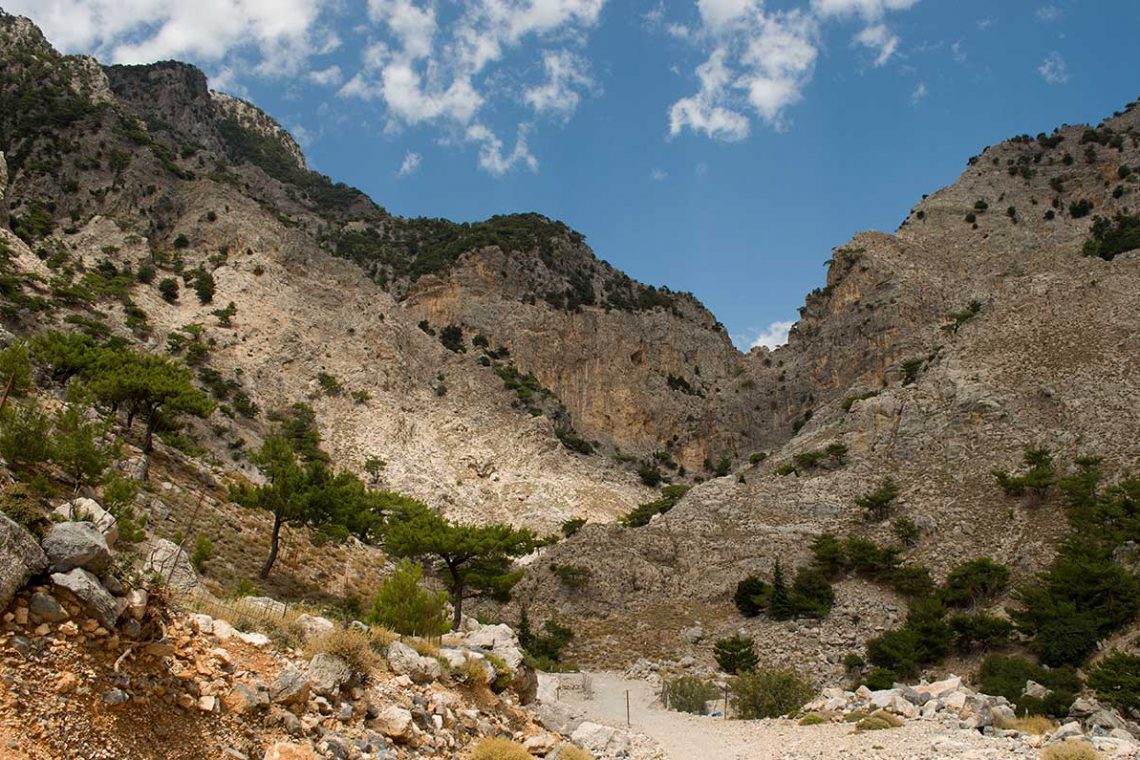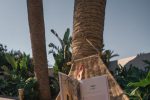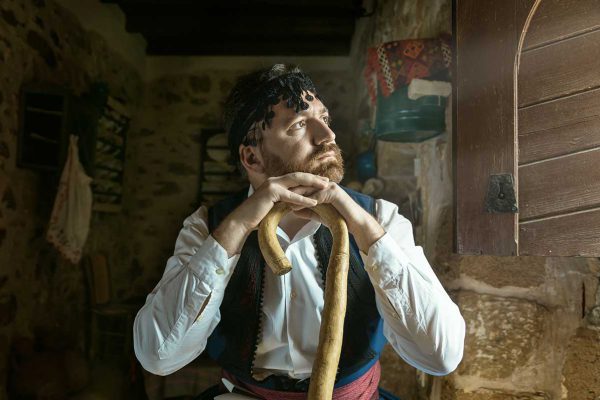Autumn, the Best Season to Trek the Gorges of Crete
Crete is the ultimate family destination. There are exceptional accommodation choices available in the high tourist season, but many hotels remain open in the colder months for adventurers who want to see the island without the madding crowds.
You will want to plan a Cretan holiday in the fall or winter. Autumns are mild, with temperatures around 27°C in September, then slowly cooling in October (25°-22°C) and getting rainy and chilly in November. If you can make it in September until mid-October, this is the best timeframe to explore the gorges of Crete.
The island has more than four hundred gorges. Here is an overview of some of the most spectacular and popular for each of the four main regions of the island: Chania, Rethymnon, Heraklion, and Lasithi.
Gorges of Chania
The gorges of Chania rank among the most beautiful on all Crete: this is the destination to see Samaria Gorge, Aradena Gorge, and the famous Agia Irini Gorge, among many others.
Samaria Gorge
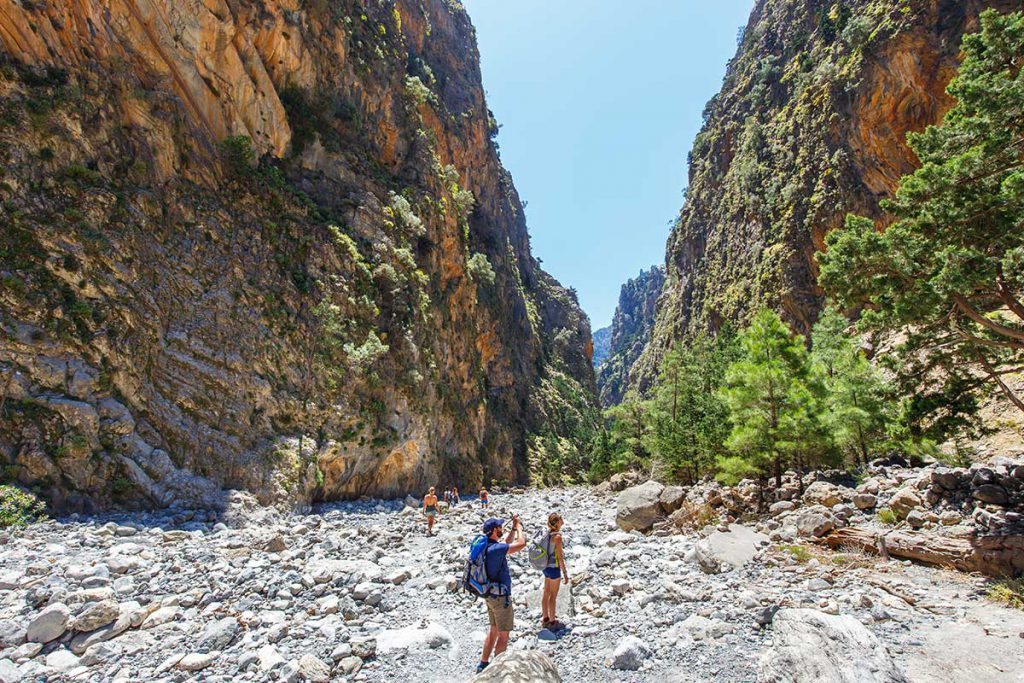
Samaria Gorge is the most popular of all the Cretan gorges. It is part of the European E4 hiking trail and attracts hundreds of tourists every day in the dry seasons. Do note that it is dangerous to explore the Cretan gorges during the winter when heavy rains may affect the terrain and cause inundations all over the island.
The trek can take some seven long hours considering the length of the Samaria Gorge: 14.5 kilometres. If your hiking pace is fast and you are experienced, it may take less to explore this wonder of nature, but you will want to take your time to admire the landscapes along the way. The gorge begins at the Omalos plateau and ends at the beautiful Agia Roumeli beach.
Since 1962, the Samaria Gorge has been a national park, home to the elusive Cretan ibex.
Aradena Gorge
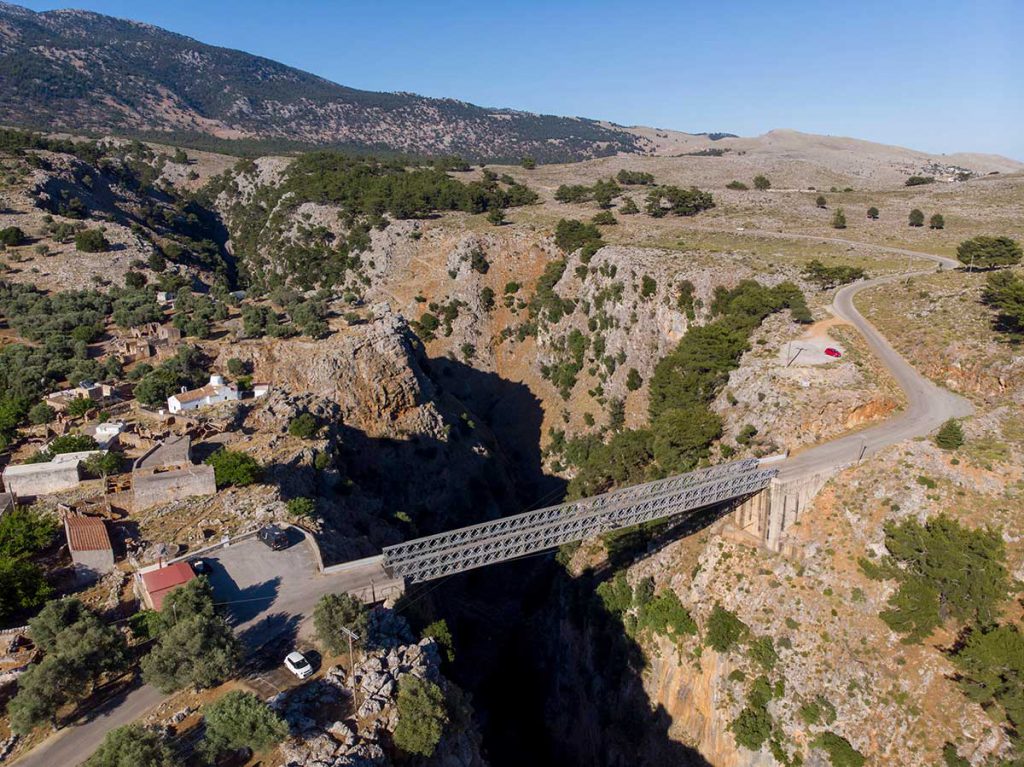
The Aradena Gorge (or Gorge of Aradaina), also known as Faragas (huge gorge) due to its 15 kilometres length, is interesting for hikers and bungee jumping enthusiasts. The canyon is 138 meters deep. An iron bridge built by the Vardinogiannis family unites its two sides: this is where the bungee jumping fans can get their adrenaline fix.
You can either explore the entire gorge from Thodoris peak to the Gialeskari beach (also known as Marmara) or start at Aradena village and hike only seven kilometres to the beach. Then, swim there to complete your experience as a local would.
You’ll see many captivating attraction points along your trek, including the chapel of Astratigos (Michael the Archangel), trails to the walls of the gorge, and abandoned villages. When you reach the gorge’s exit, walk to the Gialeskari beach and take the boat to Loutro.
Agia Irini Gorge
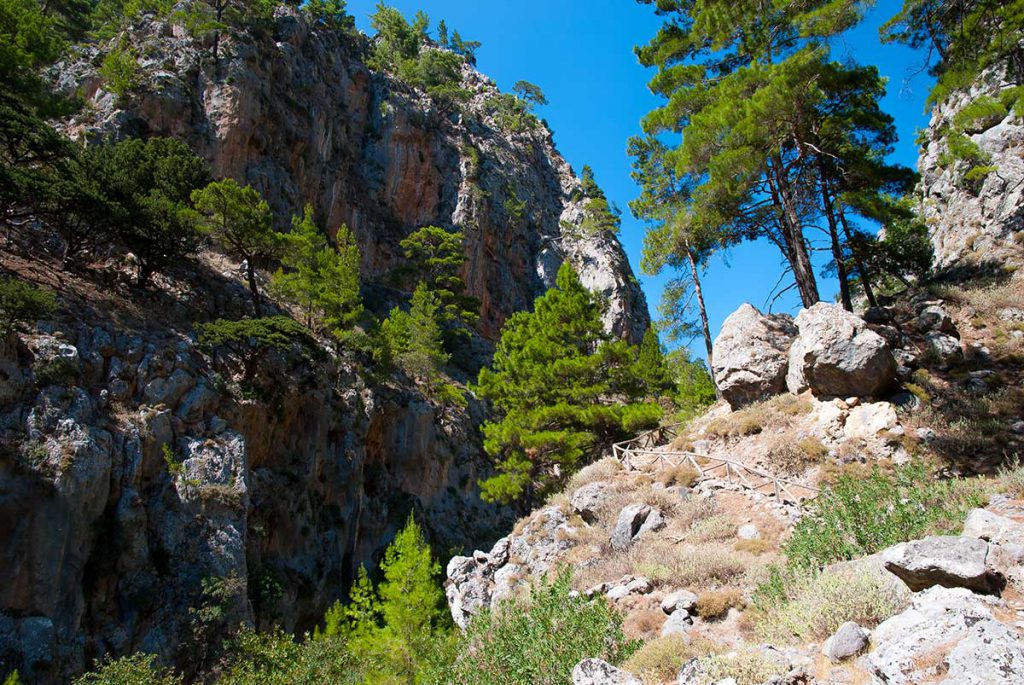
Agia Irini Gorge starts at Agia Irini village. It ends after 7.5 kilometres at Sougia village, where you can rest on a pristine, beguiling beach, have a bite at a local fish taverna, or go for a swim. It is the second most popular gorge of Crete after Samaria Gorge.
The gorge is part of the E4 European Long-Distance Path, and the Natura 2000 protected network due to its flora and fauna. In addition, the Greek Ministry of Agriculture designated this canyon a wildlife reserve for the presence of the endangered Cretan ibex and habitats for other animals. As far as fauna is concerned, the gorge is one of the places where the treasured Cretan dittany (Origanum Dictamnus) thrives among other endemic plants.
There are two fascinating landmarks to visit when exploring the gorge: the Byzantine Church of the Christ, erected in 1358 AD, and the ruins of the Church of Saint George, dating from 1460 AD.
Gorges of Rethymnon
There are several awe-inspiring gorges in the Rethymno regional unit of Crete: Kourtaliotiko Gorge, the Agios Antonios Gorge at Patsos, and the Kollita Gorges are the most popular.
Kourtaliotiko Gorge
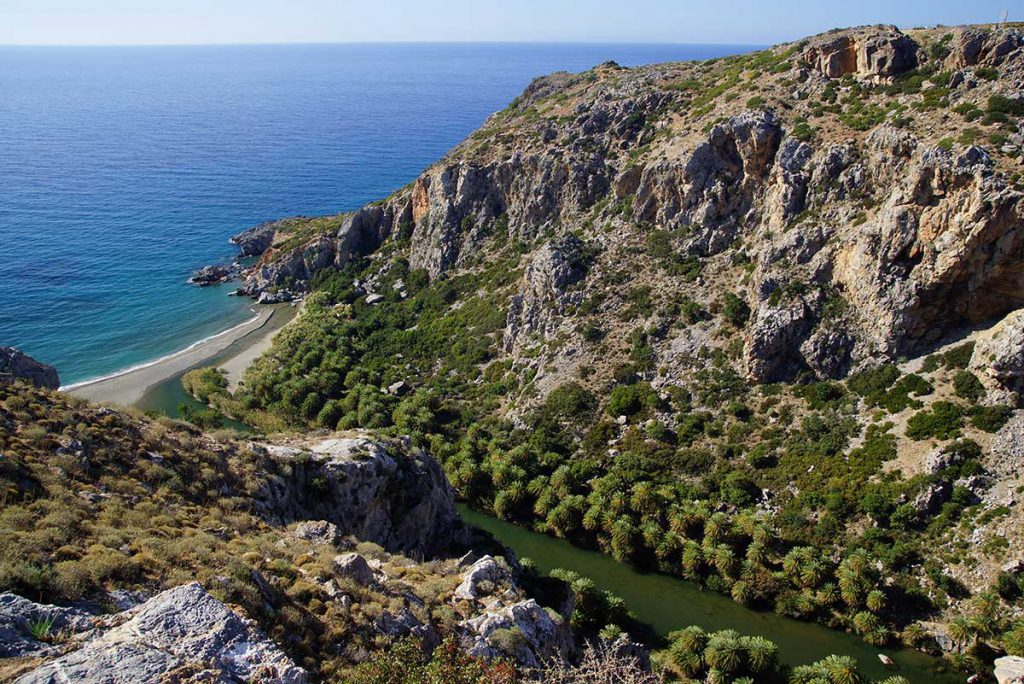
Considered by many one of the most beautiful gorges of Rethymnon, the Kourtaliotiko Gorge (also known as Asomatos Gorge) begins at Koxare village and runs down to the waterfall of Kourtaliotis, the Megalos River bridge, and ends to the Preveli palm beach.
While trekking the gorge, visit the Nicholas Kourtaliotis Chappel, the springs nearby, and the waterfall. There’s a small lake below the waterfall, where you can swim.
The Kourtaliotiko Gorge is a destination for birdwatching: many endangered species, including vultures, can be observed here. Other animals in this area include tortoises (Mauremys caspica) and leopard snakes (Elaphe situla). The second-largest Cretan Date Palm tree (Phoenix theophrasti) forest grows at the exit of the gorge.
Antonios Gorge at Patsos
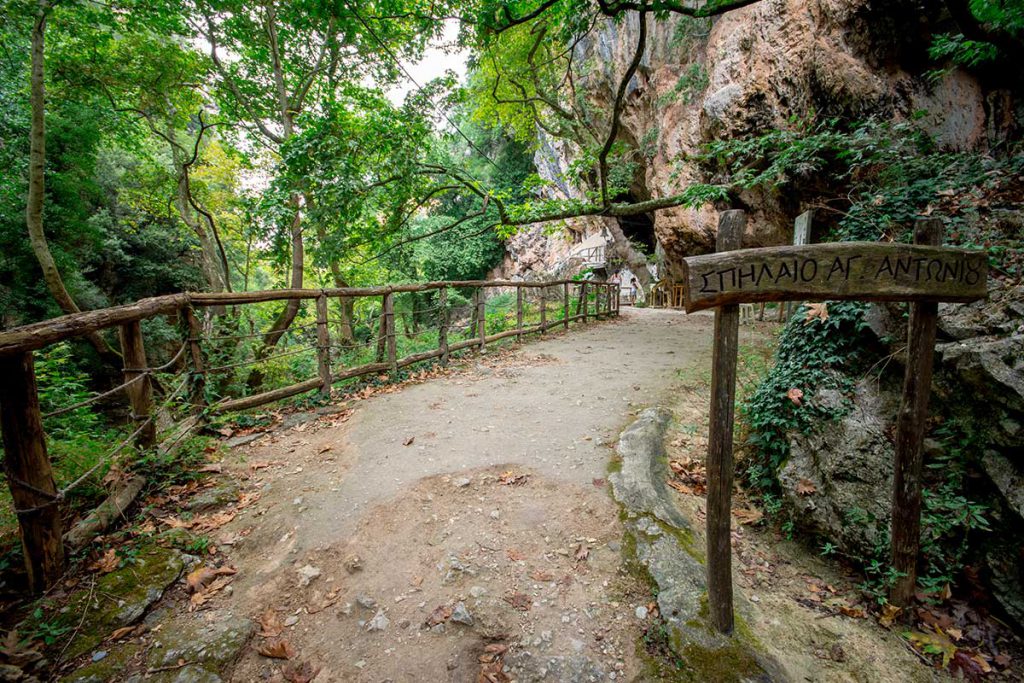
When you visit the famous Monastery of Arkadi, drive eight kilometres southwest to see the stunning Patsos Gorge (also known as Agios Antonios Gorge). It is a spectacular area, famous for the cavernous temple of Agios Antonios (Saint Anthony), which occupies the former sacred cave dedicated to Kraneos Hermes.
You’ll find a potable water spring devoted to the Greek god Hermes a few meters below the cave in the resting area. If you have a water bottle with you, refill it here.
The water of the river traversing the gorge supplies the Potami dam. Hiking the first part of the gorge to the sacred cave is accessible. The rest is only for experienced hikers. As you walk, you will notice several small waterfalls.
There’s a popular taverna at the canyon entrance serving typical Cretan mountain fare at very accessible prices.
Kollita Gorges

The Kollita Gorges (meaning Twin Ravines) are two parallel canyons near the ancient city of Lappa, 22 kilometres southwest of Rethymno city. They start in Argyroupolis and end near the village Kato Poros. The eastern canyon is known locally as the Moundros Gorge, while the one at the west is the Vilandred Gorge.
Argyroupolis is famous for its springs, beautiful Venetian architecture, trout tavernas, old churches, and other treasures. Along the gorges, you will find important landmarks, including an
ancient burial place carved in the mountainside (Hellenistic and Roman tombs of Lappa), the Pente Parthenes (Five Virgins) Chapel with the imposing plane tree of Pente Parthenes nearby.
Gorges of Heraklion
Heraklion has many jaw-dropping gorges, some of them only for highly experienced trekkers – especially near Tsoutsouras and Keratokambos. Here are three selected gorges for their popularity but also due to their particularities.
Rouvas Gorge
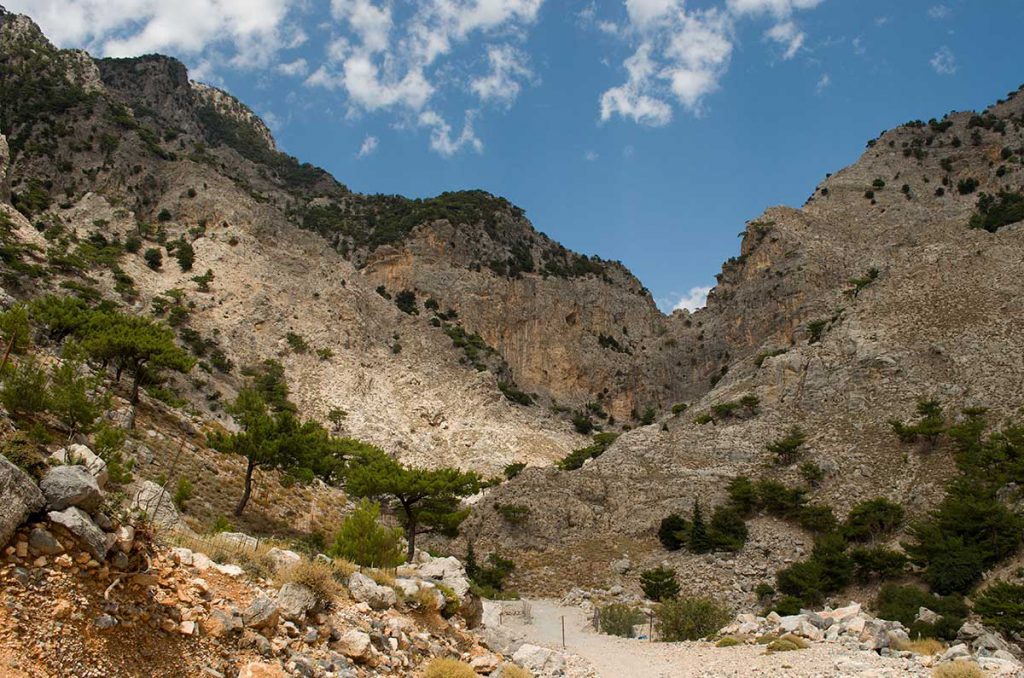
This gorge has several names: Rouvas Gorge, Agios Nikolaos Gorge, or Gafaris Gorge. Whatever you call it, it is the most popular trekking destination in the Heraklion regional unit and the most important gorge of Psiloritis.
The gorge is about four kilometres long, with an area of about 2.5-2.7 kilometres well-cared for by the Cretan Forest Service, and suitable for hiking, rock climbing, walks in nature, and mountaineering, among others.
As its name suggests, Rouvas Gorge passes through the Rouvas Forest, famous as a habitat of katsoprina holly trees of national interest.
Other points of interest in the area include the Monastery of Saint Nicholas, Lake Zaros, Nida Plateau, primitive stone creameries called mitata, and the Samari shelter.
Arvi Gorge
The impressive Arvi Gorge is a wonder of nature. The gorge cuts through Mount Arvion, the site of the former shrine of Zeus Arveios. Only experienced hikers and mountaineers should attempt to cross this gorge, and only with the proper gear, apparel, and flashlights. This is a technical trek with a high level of difficulty.
The gorge begins at the woods of Konisma, runs through Fournos, and along its length, you will see the 85 meters Kapnistis waterfall. The Kapnistis river descents underground 150 meters into a cave with waterfalls. This part of the gorge is challenging and dark.
There are about twenty more waterfalls along the ravine until you reach the plains of Arvi, known all over Crete for their banana plantations. While here, visit the Monastery of Agios Antonios.
Kounaviano Gorge
An oasis of green, the Kounaviano Gorge starts at Peza village and ends at Kaki Rachi near Skalani. Hiking here is relatively easy but exciting for nature lovers nevertheless, especially for its lush green vegetation, formed due to several freshwater springs that cross it.
The gorge has a marked path, bridges across the springs, wooden railings, and information signs. You will see waterfalls and watermills once used for grinding cereals.
You will enjoy a two-hour pleasant hike under the shade of the trees. A professional camera will capture beguiling landscapes along the way.
Gorges of Lasithi
Lasithi has many gorges of rare beauty, and exploring them is a memorable pastime. Here are a couple to inspire your journeys.
Richtis Gorge
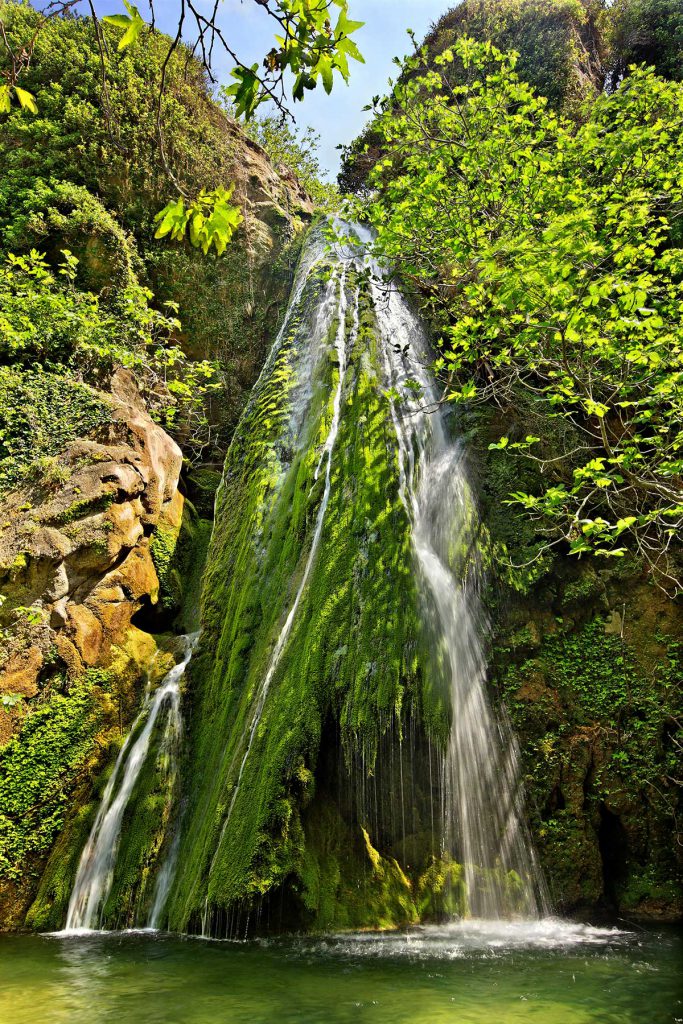
The Richtis Gorge is about three kilometres long from the Exo Mouliana village to Richtis Beach, east of Kalavros village. The route starts at the 19th-century arched bridge of Lachanas and takes about four hours to finish, depending on your hiking pace and skill.
The water on the river along the canyon comes from Drymias Peak of the Orno mountain range. You will also notice several watermills used to grind cereals along the way. The aroma of wild Cretan herbs growing in the area purifies the air.
Snap a few pictures of the impressive, twenty meters high Richtis waterfall, which has water year-round. Then, rest on the pebbly Richtis beach and tame your thirst with spring water from the local fountain there.
Sarakina Gorge
Sarakina Gorge is only 1.5 kilometres long, but this doesn’t take away its beauty and fascination with hikers. According to the legend, Zeus’s son, the giant Sarantaphilos, once drank water from Myrtos near Ierapetra. His beard split the mountain in two, creating the canyon we now call Sarakina.
As you hike along the gorge, you will observe tall walls (about 160 meters high), narrow passages, waterfalls, and ponds. You can swim in the summer, but please note that hiking this canyon in the winter may be dangerous, especially during or after heavy rains. In addition, some parts of the Sarakina Gorge may present some technical difficulties for less experienced hikers or the elderly because of the presence of boulders, rocky bridges, tree trunks, and stone-carved steps.
Takeaway
There are many other fascinating gorges to explore on the island – some easy to hike on, others extremely difficult. Whatever your skill levels, always wear proper footwear and clothing. Sunscreen is recommended, although if you plan to swim in the rivers or ponds on the way, please don’t use it to protect the fragile local ecosystems. Also, never go trekking during and after heavy rains as the terrain may be damaged or dangerous.

